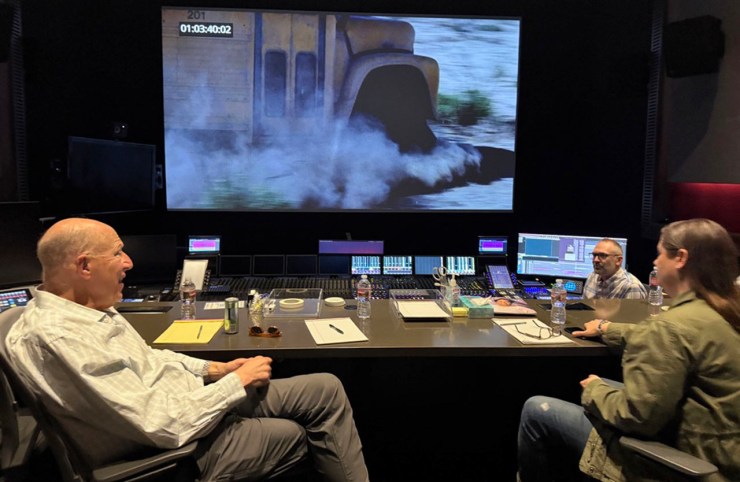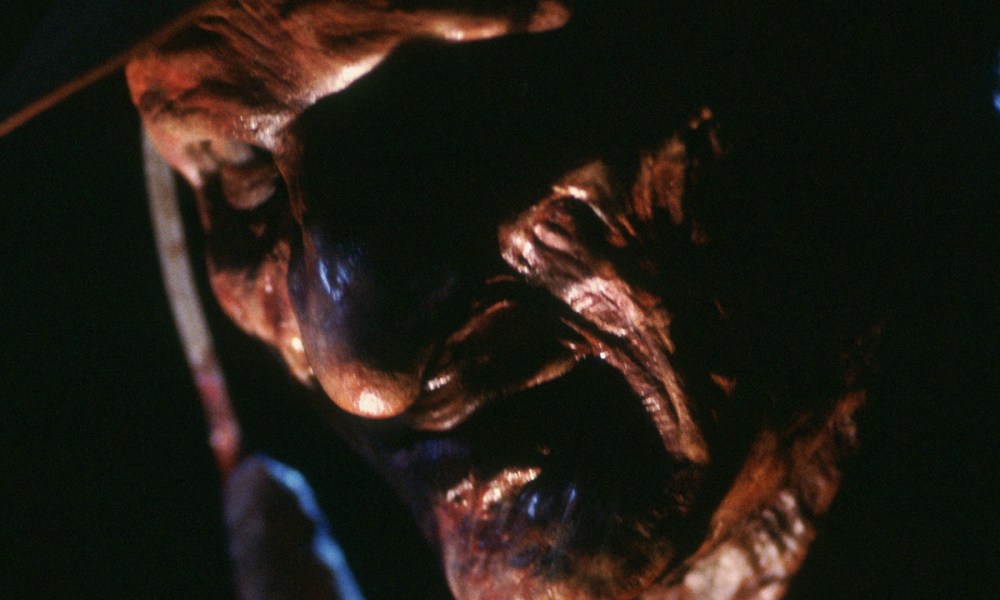In celebration of the A Nightmare on Elm Street 4K UHD box set, A Nightmare on Elm Street 2: Freddy’s Revenge director Jack Sholder chatted with Bloody Disgusting about his notorious sequel, its legacy after 40 years, and the new 4K restoration.
“Wes Craven was supposed to direct it, and he dropped out about six weeks before the start of production. The train was going down the track when New Line asked me if I would do it,” Sholder recalls.
“There wasn’t a whole lot of time to really think about legacy or anything other than how the hell am I gonna get this movie made in six weeks with, like, a hundred special effects, none of which I knew how to do, and a whole bunch of other things.
“I knew New Line was hoping for another sequel, but nobody had any idea that it was going to be what it turned out to be. I’m thrilled. There’s still a big audience for Part 2, and the movie keeps on selling.”
Sholder recalls, “When we were testing the film, Bob Shaye, the head of New Line, kept saying it’s not scary. I worked on it to try to tighten it up and put in bigger, scarier music and all of that — which is basically putting lipstick on pig.
“But there was a problem with the structure of the film, which was that Freddy keeps showing up and saying, ‘I’m gonna do this, I’m going to do that.’ But he never does anything until the end of the second act, which is the whole scene in the in the gym with the coach.
“Bob said, ‘You’ve got to move it up to the beginning of the second act, and then when he says he’s going to do something, you believe him because he already did.’ And I said, ‘Well, we can’t do that. It won’t make any sense, because then the coach is dead, and the story has to go on with the coach still there.’”
Utilizing his background as an editor — a 14-year career that included cutting The Burning — the solution came to Sholder on a subway ride after a test screening. “I figured out how to move that whole scene up to the beginning of Act 2 by finding a shot where I could put some voiceover where you couldn’t see their lips to cover the logical problem. We moved it up, and suddenly the film got a lot scarier.
“When people tell me it’s one of the scariest ones, I always say, ‘Wow, that’s so great, because that was the big problem we were facing.’ So it’s always a thrill to hear people say that.”
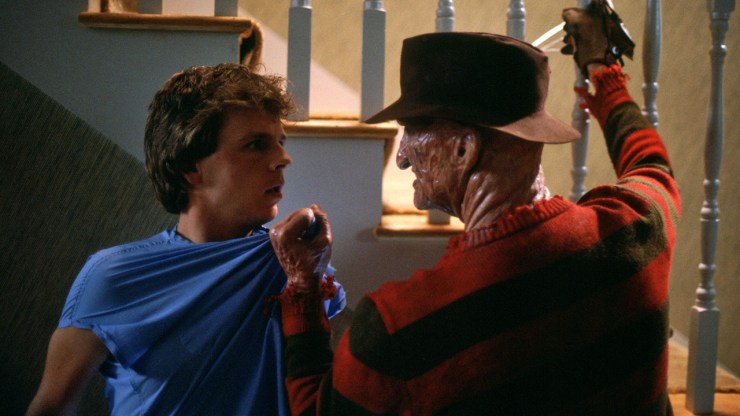
Addressing the film’s oft-discussed queer subtext, Sholder says, “We actually got pretty good reviews for a sequel to a low-budget horror film. But there was one review from The Village Voice that said it was ‘the gayest horror film of all time,’ or something along those lines. We thought it was funny, because it never occurred to any of us. I always saw it as tying in with the theme of teen sexual anxiety.”
Following the successful release, Sholder continued to work in the industry — helming the likes of The Hidden, Wishmaster 2: Evil Never Dies, and “Tales from the Crypt.” His time on Elm Street was but a distant memory until he was asked to participate in a Freddy’s Revenge reunion convention.
“I thought, ‘Oh, it sounds like it would be fun to see all these people who I haven’t seen since I made the movie.’ I stayed in touch with Robert [Englund] and we had seen each other socially, but nobody else.
“And then I found out from Mark Patton about his whole story; dropping out after the end of the movie, and they had to find a detective to dig him up. There was this whole new interpretation of the movie, and Mark was taking a lot of heat from that.”
He adds, “It always seemed like it was considered the ugly stepsister, and then there began to be a reappraisal of the film.”
Sholder acknowledges that his sequel is more of a standalone effort than a continuation of the first film. “The writer [David Chaskin] broke the cardinal rule of the series, which is that Freddy only comes out in your sleep, which I think is one of the reasons that Wes always objected to it.”
He continues, “My approach was, ‘Hey, I’m gonna make a better movie than the first one.’ That was my attitude. Honestly, the only thing that New Line ever said was to keep Freddy dark and keep him scary. There was no pressure to recreate a masterpiece.
“In fact, the head of distribution at New Line said, ‘If this film makes 70-80% of what the original made, we’d be very happy. Fortunately, it ended up making quite a bit more.” Freddy’s Revenge ended up grossing just under $30 million at the box office, besting the original’s $25.5 million.
“The whole gay subtext has only added to it. People teach it in film studies classes now,” Sholder says. “While it was not ever something that we intended, it’s certainly in there, and I was aware that it was in there. I think it’s great that people can interpret the film however they want. I’m thrilled that there’s a whole group of fans who find that there are things that they can identify with in the film.”
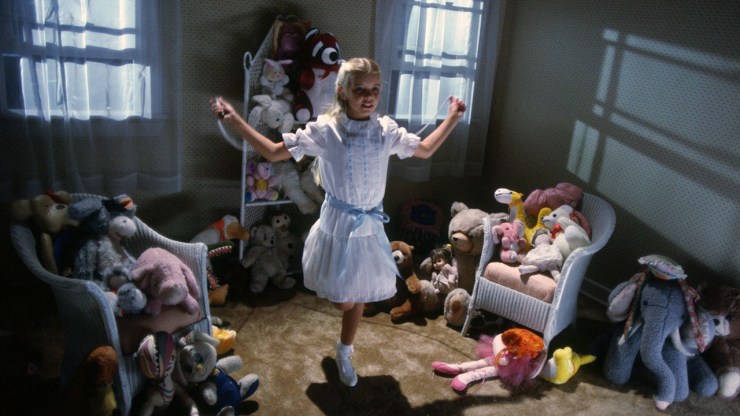
Sholder was delighted to be involved with the new 4K restoration. “I got a call from Warners that they were doing this, and they wanted me to come out and approve everything. They had already done the work. They had gone through and scanned the film in 4K.”
He notes, “I asked why they didn’t scan it in 8K for the future since they were going to all this trouble, and they said, ‘Well, we actually did a test in 4K and 8K and couldn’t tell the difference.’ Basically, there was no more information to be added in the 8K that you didn’t get in the 4K.”
The process not only afforded Sholder the opportunity to approve the restoration but also bring the film closer to his original vision. “It looks gorgeous. It’s beautifully photographed, and all of that comes out. I was able to do a bunch of little tweaks and corrections that were impossible to do when you were just on film. It’s basically the same, except it’s better.
“There are little, minor tweaks. For instance, in the opening scene with the bus ride, one of the concepts we had was that the front of the bus would have a kind of a demonic face to it, a little bit like The Cars That Ate Paris. So they put some tusks on it, and there was supposed to be smoke coming out of the front of this thing — but it never really worked right. It was really lame. Now I was able to just enhance the smoke a little bit.
“There were little things like that where I could just go in and tweak, and probably no one will even notice it. But it’s an accumulation of tiny little details that I think make it better.”
Sholder occasionally found himself getting carried away with the possibilities, but he ultimately chose not to stray too far from the original aesthetic. “There was one point where I wanted to make this whole scene look a little different, and the Warner Bros. executive who was sitting there said, ‘Jack, don’t do that. Keep it the way it was originally.’ And I said, ‘Okay, I completely accept that. This is the film we made in 1984.’
He continues, “It was one of the sequences in the house that I wanted to make a little bit darker, a little bit spookier. You know, films made in 2025 look different from films made in the ’80s. There’s a different kind of aesthetic.
“You could go through and redo some of the special effects — they’re a little hokey — and digitally fix them up. But that’s part of the charm. It’s a handmade product. It means a human being worked on it, and human beings are not perfect.”
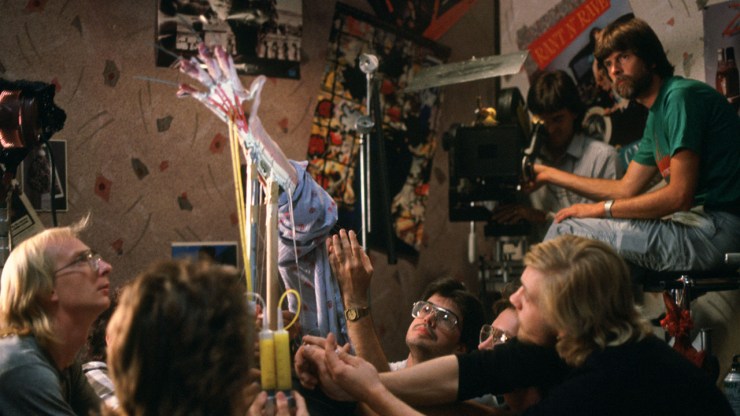
Sholder’s involvement with the restoration went as in-depth as considering the amount of grain present in the new transfer. “I’ve only seen it on the studio monitor, but Warners assures me that all the grain is still there.”
He explains, “Something that I think people don’t fully understand is that there’s an original negative, and then when they go into release they make an interpositive off the original negative, and then they make an internegative, and then they make the 35mm prints off of the internegative. So you’re three generations removed, and each time it goes another generation you pick up a little more grain.
“For us, the perfect situation would have been that all of the prints were made from the original negative, because that’s what we were going for, but you don’t do that because it puts the original negative at risk. However, this was scanned off of the original negative for the first time, so this is the way that we had envisioned the film looking from the get go. I’m very happy about that.”
As a cost-cutting measure, the film’s audio was originally mixed in mono rather than stereo, but the 4K boasts a new Dolby Atmos soundtrack. “Putting the original mono mix into Dolby Atmos blew my mind. I was able to hear things that I’d never heard. It made me look like a much better filmmaker,” Sholder chuckles.
“We were able to go in and raise certain balances. We were originally mixing to a mono track, and optical tracks are pretty good but they had certain limitations. I was always told, ‘No, you can’t make that any louder or you have to make something else softer.’ But in Atmos you could hear everything.
“I was watching the sequence with the demonic parakeet. How do you make a scene with a demonic parakeet any good? We did the best we could. And now I’m watching it like, ‘Wow, this is like The Birds! This is really good.’ Then I played it with the original track and it was, you know, so-so. That’s how much difference good sound makes.”
Sholder adds, “I was just thrilled with how it turned out. I have to say that everybody at Warner Bros. really gave the film a lot of love and did everything the right way, so I couldn’t be happier.
“The process for me was like when they take like an old Renaissance painting and restore it. They spend a year, take all the old varnish off, and there’s all these little details you could never see. This is the way that the artists who made this film wanted it to be.”
The restoration process allowed the filmmaker to appreciate Freddy’s Revenge in the similar way that audiences have come to embrace it over the last 40 years. “I have reassessed it, and for what it is, I think it’s really quite good. I am very pleased and so proud of the work that I had done on it. It basically did what it was supposed to do.”
Sholder concludes, “I’m assuming the rest of the series also look as good as ours. I hope that everybody who watches it feels as excited about it as I do.”
A Nightmare on Elm Street 7-Film 4K Collection will be released September 30.
